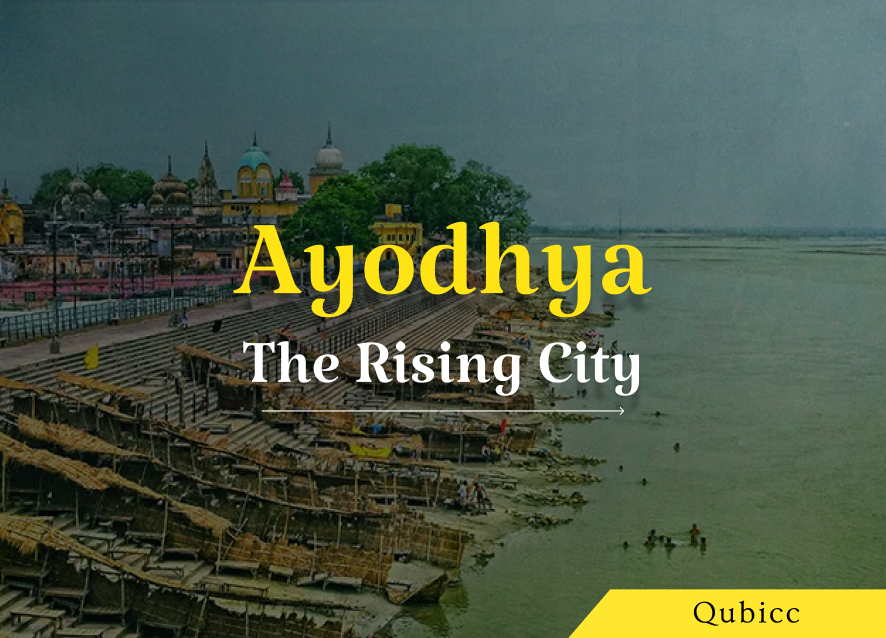Ayodhya : The Rising City

Ayodhya : The Rising City
Introduction
Ayodhya is situated on the banks of the Sarayu River of Uttar Pradesh. Ayodhya was formerly known as Saketa. As per the religious Buddhist and Jain texts, Gautama Buddha and Mahavira visited here and stayed there for a long time.
Certainly! Ayodhya is a city steeped in history, mythology, and spirituality. Let’s explore its significance together.
- Historical and Mythological Roots:
- Birthplace of five Tirthankaras: The religious texts also describe it as the birthplace of five Tirthankaras namely, Ajitanatha, Sumatinatha Abhinandananatha, Rishabhanatha, and Anantanatha, also the birthplace of the legendary Bharata Chakravarti. After the Gupta period, Saketa and Ayodhya are referred to as the same city.
- Birthplace of Lord Rama: Ayodhya is revered as the birthplace of Lord Rama, one of the most revered deities in Hinduism. According to the epic Ramayana, the legendary city of Ayodhya has been identified as the birthplace of Lord Rama and is mentioned in other texts as well. The city witnessed his early life and adventures.
- Buddhist and Jain Connections: Gautama Buddha and Mahavira, the founders of Buddhism and Jainism respectively, visited and lived in Ayodhya. The city is also associated with five Tirthankaras (spiritual leaders) in the Jain tradition.
- Ancient Kosala Kingdom: In ancient times, Ayodhya served as the capital of the Kosala Kingdom. Its prosperity, well-fortified walls, and large population are mentioned in historical texts.
- The Ayodhya Dispute:
- Babri Masjid and Ram Janmabhoomi: The Babri mosque was built during the Mughal era of 1528-29 under the rule of Babur. This mosque was built on the site which is believed to be the birthplace of Lord Rama. The dispute over this site led to significant interreligious tensions.
- The Demolition and Legal Verdict: A Hindu mob demolished the Babri Masjid in 1992 which provoked riots across India. In 2019 the Supreme Court ruled that the land belonged to the government and hence handed it over to a Hindu trust allowing for the construction of a Grand Ram Mandir. The construction of Ram Mandir was started in August 2020 and consecrated in January 2024.
- Religious places to visit in Ayodhya:
- Ram Mandir: The Ram Mandir was consecrated with the deity of Lord Rama in January 2024. This Hindu temple is believed to have been built on the site of birth-place of Lord Rama. The newly constructed Ram Mandir stands as a symbol of faith and unity. It attracts pilgrims from all over India.
- Hanuman Garhi Fort: This is the most revered shrine in Ayodhya surrounded by four massive sides and circular bastions at each corner. It stands in the center of town, approachable by a flight of 76 steps. It is said that Sri Hanuman lived here in the cave to guard the birthplace of Lord Rama.
- Ramkot: Ramkot is the ancient site standing on the elevated ground of the city; it is the central place to visit in Ayodhya for worshiping Lord Drama. It attracts the most pilgrims during the Navratri season in the Hindu month of Chaitra. The pilgrims also visit this place across the year but the major attraction is said to be the occasion of Ram Navami which is celebrated with great enthusiasm and devotion.
- Nageshwarnath Temple: It is said that this temple was established by the son of Rama, Kush. The historical facts mention that when Kusha lost his armlet while bathing in the Sarayu River it was retrieved by a Naga-Kanya, a devotee of Lord Shiva who fell in love with Kush, he built this temple in her name.
- Present-day Ayodhya (Modern Ayodhya): The Prime Minister of India Sri Narendra Modi laid the official foundation stone for the Ram Mandir (the birthplace of Lord Drama) in August 2020. A new Township -Navya Ayodhya was planned to be built on 500- acre site immediately after the Faizabad- Gorakhpur Highway, having luxury hotels and apartment complexes. The robust growth in Ayodhya is so appealing that manufacturers, builders, and businessmen want to invest in Ayodhya.
- The Current Urban Landscape: Ayodhya’s Evolution
With the building of a new township in Ayodhya, it isn’t merely a religious hub. It’s a thriving city experiencing rapid urbanization. Here are some key points that explain the key reasons to invest in Ayodhya.
- Connectivity: Ayodhya has robust rail and road connections to major cities like Lucknow, Varanasi, Prayagraj, Gorakhpur, and Delhi. The recently renamed Maharishi Valmiki International Airport (formerly Ayodhya International Airport) further enhances connectivity and tourism.
- Investment Hotspots: Prime locations like Chaudah Kosi Parikrama, Ring Road, Deokali, and Nayaghat, located within a 5- 15- Kilometer radius of the temple, attract major interest. Additionally, land parcels along the Gorakhpur Faizabad Highway are witnessing increased activity.
- Investment Opportunities in Ayodhya/ Why invest in Ayodhya:
- Residential Sector: Ayodhya’s real estate market, especially in the residential sector, is experiencing significant growth. There’s a surge in demand for modern living spaces. If you’re considering residential investments, Ayodhya offers promising options.
- Commercial Sector: The Ram Mandir Effect has not only boosted residential plots but also opened up lucrative opportunities in the commercial space. With more tourists and devotees visiting Ayodhya, there is a growing need for hotels, restaurants, and retail spaces.
- Infrastructure Projects: Ayodhya’s increasing number of land transactions and projected growth in tourism and hospitality further solidify its potential as a real estate investment hub. Investors can explore infrastructure projects that align with the city’s development vision.
If you are planning to Invest in Ayodhya, read this blog first. Or, you can contact Qubicc. We will help you assess the best options you can invest in.
Whether you’re drawn by spirituality, history, or economic prospects, Ayodhya invites you to be part of its transformative journey. Do you want to invest in Ayodhya, or do you have any specific aspects you’d like to explore further? ðŸ›ï¸ðŸŒŸ

